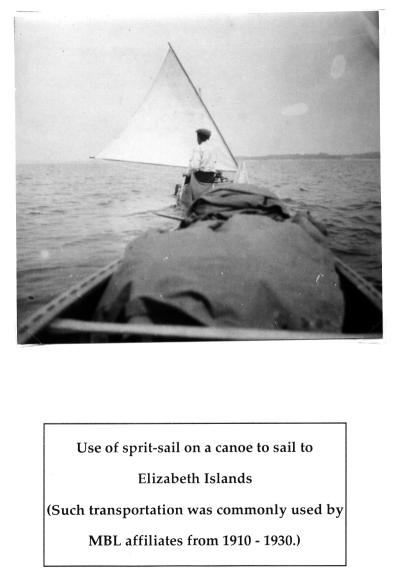Matching Items (1,561)
Filtering by
- Creators: Marine Biological Laboratory Archives

Description
Identifying factors associated with service infusion success has become an important issue in theory and practice, as manufacturers turn to services to advance performance. The goals of this dissertation are to identify the key factors associated with service infusion success and develop an integrative framework and associated research propositions to isolate the underlying determinants of successful hybrid solution strategies for business customers. This dissertation is comprised of two phases. The first phase taps into the experience and learning gained by executives from Fortune-100 manufacturing firms who are managing the transition from goods to hybrid offerings for their customers. A discovery-oriented, theory-in-use approach is adopted to glean insights concerning the factors that facilitate and hinder those service transition strategies. Twenty-eight interviews were conducted with key executives, transcripts were analyzed and key themes were identified with special attention directed to the particular capabilities that managers consider crucial for successful service-growth strategies. One such capability centers on the ability of a firm to successfully transfer newly-developed hybrid solutions from one customer engagement to another. Building on this foundation, phase two involves a case study that provides an in-depth examination of the hybrid offering replication process in a business-to-business firm attempting to replicate four strategic hybrid offerings. Emergent themes, based on 13 manager interviews, reveal factors that promote or impede successful hybrid offering transfer. Among the factors that underlie successful hybrid offering transfers across customer engagements are close customer relationships, a clear value proposition embraced by organizational numbers, an accurate forecast of market potential, and collaborative working relationships across units. The findings from the field studies provided a catalyst for a deeper examination of existing literature and formed the building blocks for the conceptual model and several key research propositions related to the successful transfer of hybrid offerings. The model isolates five sets of factors that influence the hybrid offering transfer process, including the characteristics of (1) the source project team, (2) the seeking project team, (3) the hybrid offering, (4) the relationship exchange, and (5) the customer. The conceptualization isolates the critical role that the customer assumes in service infusion strategy implementation.
ContributorsSalas, Jim (Author) / Walker, Beth (Thesis advisor) / Hutt, Michael D. (Thesis advisor) / Park, Sungho (Committee member) / Ulaga, Wolfgang (Committee member) / Arizona State University (Publisher)
Created2013

Description
Social media offers a powerful platform for the independent digital content producer community to develop, disperse, and maintain their brands. In terms of information systems research, the broad majority of the work has not examined hedonic consumption on Social Media Sites (SMS). The focus has mostly been on the organizational perspectives and utilitarian gains from these services. Unlike through traditional commerce channels, including e-commerce retailers, consumption enhancing hedonic utility is experienced differently in the context of a social media site; consequently, the dynamic of the decision-making process shifts when it is made in a social context. Previous research assumed a limited influence of a small, immediate group of peers. But the rules change when the network of peers expands exponentially. The assertion is that, while there are individual differences in the level of susceptibility to influence coming from others, these are not the most important pieces of the analysis--unlike research centered completely on influence. Rather, the context of the consumption can play an important role in the way social influence factors affect consumer behavior on Social Media Sites. Over the course of three studies, this dissertation will examine factors that influence consumer decision-making and the brand personalities created and interpreted in these SMS. Study one examines the role of different types of peer influence on consumer decision-making on Facebook. Study two observes the impact of different types of producer message posts with the different types of influence on decision-making on Twitter. Study three will conclude this work with an exploratory empirical investigation of actual twitter postings of a set of musicians. These studies contribute to the body of IS literature by evaluating the specific behavioral changes related to consumption in the context of digital social media: (a) the power of social influencers in contrast to personal preferences on SMS, (b) the effect on consumers of producer message types and content on SMS at both the profile level and the individual message level.
ContributorsSopha, Matthew (Author) / Santanam, Raghu T (Thesis advisor) / Goul, Kenneth M (Committee member) / Gu, Bin (Committee member) / Arizona State University (Publisher)
Created2013

Description
This thesis is broken down into two sections. The first being market research and the second being the creation of the financial guide. The first section includes our primary and secondary data. In this section, we discover whether or not there is an actual need for a financial guide among college students, as well as the relationships among different variables that we included in our survey. The second section comes in the format of a financial guide that we have created. It includes topics that that our survey respondents feel most pertinent to them. It also uses the data we collected to emphasize certain topics over others in order to educate our readers and capture their attention as much as possible.
ContributorsShi, Cindy (Co-author) / Megan, Vogelsang (Co-author) / Hoffman, David (Thesis director) / Park, Sungho (Committee member) / W. P. Carey School of Business (Contributor) / Department of Marketing (Contributor) / Barrett, The Honors College (Contributor)
Created2016-05

Description
Consumers search before making virtually any purchase. The notion that consumers engage in costly search is well-understood to have deep implications for market performance. However to date, no theoretical model allows for the observation that consumers often purchase more than a single product in an individual shopping occasion. Clothing, food, books, and music are but four important examples of goods that are purchased many items at a time. I develop a modeling approach that accounts for multi-purchase occasions in a structural way. My model shows that as preference for variety increases, so does the size of the consideration set. Search models that ignore preference for variety are, therefore, likely to under-predict the number of products searched. It is generally thought that lower search costs increase retail competition which pushes prices and assortments down. However, I show that there is an optimal number of products to offer depending on the intensity of consumer search costs. Consumers with high search costs prefer to shop at a store with a large assortment of goods and purchase multiple products, even if the prices that firm charges is higher than competing firms' prices. On the other hand, consumers with low search costs tend to purchase fewer goods and shop at the stores that have lower prices, as long as the store has a reasonable assortment offering. The implications for market performance are dramatic and pervasive. In particular, the misspecification of demand model in which search is important and/or multiple discreteness is observed will produce biased parameter estimates leading to erroneous managerial conclusions.
ContributorsAllender, William Jacob (Author) / Richards, Timothy J. (Thesis advisor) / Park, Sungho (Committee member) / Hamilton, Stephen (Committee member) / Arizona State University (Publisher)
Created2013

ContributorsMarine Biological Laboratory Archives (Publisher) / Arizona Board of Regents (Publisher)
Created1935

ContributorsHuettner, Alfred F. (Alfred Francis), b. 1884 (Creator) / Marine Biological Laboratory Archives (Publisher)
Created1918

ContributorsMarine Biological Laboratory Archives (Publisher)

ContributorsHuettner, Alfred F. (Alfred Francis), b. 1884 (Creator) / Marine Biological Laboratory Archives (Publisher)
Created1928

ContributorsHuettner, Alfred F. (Alfred Francis), b. 1884 (Creator) / Marine Biological Laboratory Archives (Publisher)
Created1918

ContributorsHuettner, Alfred F. (Alfred Francis), b. 1884 (Creator) / Marine Biological Laboratory Archives (Publisher)